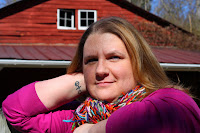DAY 2 - SANTA CLAUS
The true Saint Nicholas was born in 280 AD, in Patara, a city of Lycia, in Asia Minor. He was a Christian priest, as well as a rich person, and traveled the country helping people, giving gifts of money and other presents at night. St. Nicholas did not like to be seen when he gave away presents, so the children of the day were told to go to sleep quickly or he would not come! Nothing has changed and Santa Claus will not arrive this Christmas unless the children go to sleep early.
By 450, churches in Asia Minor and Greece were being named in honor of him. By 800, he was officially recognized as a saint by the Eastern Catholic Church.
By 450, churches in Asia Minor and Greece were being named in honor of him. By 800, he was officially recognized as a saint by the Eastern Catholic Church.
In the 1200s, December sixth began to be celebrated as Bishop Nicholas Day in France.
By the end of the 1400s, St. Nicholas was the third most beloved religious figure, after Jesus and Mary. There were more than 2000 chapels and monasteries named after him (CRAZY! I never knew that!). In the 1500’s people in England stopped worshipping St. Nicholas and favored his identity as gift-giving Father Christmas. Over the centuries, St. Nicholas' popularity grew, and many people in Europe made up new stories that showed his concern for children.
 The name Santa Claus was derived from the Dutch “Sinterklaas” pronunciation of St. Nicholas. Early Dutch settlers in New York (once called New Amsterdam) brought their traditions of St. Nicholas. As children from other countries tried to pronounce Sinterklaas, this soon became “Santa Klaas,” which then evolved into “Santa Claus.” The old bishop's robe was soon replaced with his red suit and clothing seen in other modern images. Nowadays, Santa Claus is generally depicted as a plump, jolly, white-bearded man wearing a red coat with white collar and cuffs, white-cuffed red trousers, and black leather belt and boots. This image became popular in the US during the 19th century due to the significant influence of caricaturist Thomas Nast, and it has been maintained with the help of the media.
The name Santa Claus was derived from the Dutch “Sinterklaas” pronunciation of St. Nicholas. Early Dutch settlers in New York (once called New Amsterdam) brought their traditions of St. Nicholas. As children from other countries tried to pronounce Sinterklaas, this soon became “Santa Klaas,” which then evolved into “Santa Claus.” The old bishop's robe was soon replaced with his red suit and clothing seen in other modern images. Nowadays, Santa Claus is generally depicted as a plump, jolly, white-bearded man wearing a red coat with white collar and cuffs, white-cuffed red trousers, and black leather belt and boots. This image became popular in the US during the 19th century due to the significant influence of caricaturist Thomas Nast, and it has been maintained with the help of the media. We all know that supposedly Santa Claus lives in the far north, in a land of perpetual snow. The American version of Santa Claus says that he lives at his house on the North Pole, with his wife, a countless number of magical elves, and eight or nine flying reindeer. Another legend, popularized in the song Santa Claus Is Coming to Town, says that he makes a list of children throughout the world, categorizing them as either "naughty" or "nice." On Christmas Eve, he travels the world in a reindeer-pulled sleigh, delivering presents to all the good children and coal to the naughty children.
ON A PERSONAL NOTE: I actually collect Santas. I don’t believe in him, at least not anymore, though I do like to imagine a world full of Santa-like whimsy and love and good will and generosity. And don’t get me started on chocolate Santas! (wink!) I like to look at Santas and remember what I felt and thought and believed about him when I was a kid, to feel that giggly-bubbly joy in my heart and to think that one person could make people all over the world forget their problems and feel at peace, and to believe that he could give gifts that would bring happiness to all mankind.
And then I remember that I do believe in that Person. JOY TO THE WORLD!
Info gathered from:
www.thehistoryofchristmas.com
www.wikipedia.com






No comments:
Post a Comment